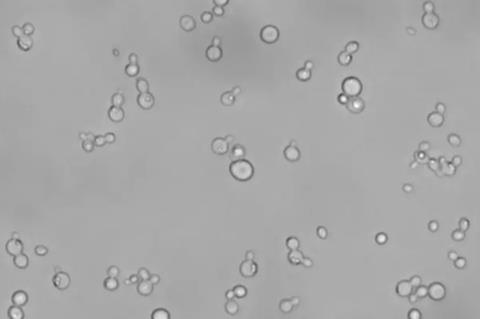Herbal medicine is difficult to produce on an industrial scale. A team of Kobe University bioengineers manipulated the cellular machinery in a species of yeast so that one such molecule can now be produced in a fermenter at unprecedented concentrations. The achievement also points the way to the microbial production of other plant-derived compounds.

READ MORE: Traditional medicine plant could combat drug-resistant malaria
READ MORE: Traditional Chinese medicine could help fight African swine fever, review finds
Herbal medicinal products offer many beneficial health effects, but they are often unsuitable for mass production. One example is artepillin C, which has antimicrobial, anti-inflammatory, antioxidant, and anticancer action, but is only available as a bee culture product. The Kobe University bioengineer Tomohisa Hasunuma says: “To obtain a high-yield and low-cost supply, it is desirable to produce it in bioengineered microorganisms which can be grown in fermenters.” This, however, comes with its own technical challenges.
Microbial production of plant-derived compounds
To begin with, one needs to identify the enzyme, the molecular machine, the plant uses to manufacture a specific product. “The plant enzyme that’s key to artepillin C production had only recently been discovered by Kazufumi Yazaki at Kyoto University. He asked us whether we can use it to produce the compound in microorganisms due to our experience with microbial production,” says Hasunuma. The team then tried to introduce the gene coding for the enzyme into the yeast Komagataella phaffii, which compared to brewer’s yeast is better able to produce components for this class of chemicals, can be grown at higher cell densities, and does not produce alcohol, which limits cell growth.
In the journal ACS Synthetic Biology, they now report that their bioengineered yeast produced ten times as much artepillin C as could be achieved before. They accomplished this feat by carefully tuning key steps along the molecular production line of artepillin C. Hasunuma adds: “Another interesting aspect is that artepillin C is not excreted into the growth medium readily and tends to accumulate inside the cell. It was therefore necessary to grow the yeast cells in our fermenters to high densities, which we achieved by removing some of the mutations introduced for technical reasons but that stand in the way of the organism’s dense growth.”
The Kobe University bioengineer already has ideas how to further improve the production. One approach will be to further raise the efficiency of the final and critical chemical step by modifying the responsible enzyme or by increasing the pool of precursor chemicals. Another approach may be to find a way of transporting artepillin C out of the cell. “If we can modify a transporter, a molecular structure that transports chemicals in and out of cells, such that it exports the product into the medium while keeping the precursors in the cell, we could achieve even higher yields,” Hasunuma says.
The implications of this study, however, go beyond the production of this particular compound. Hasunuma explains, “Since thousands of compounds with a very similar chemical structure exist naturally, there is the very real possibility that the knowledge gained from the production of artepillin C can be applied to the microbial production of other plant-derived compounds.”







No comments yet